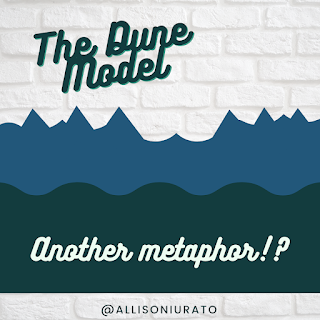Communicate with Impact
Just like my last blog post, I just attended another all day seminar through my work entitled "Communicate with Impact." While the instructor was a funny and engaging guy, the course itself didn't offer the most mind-blowing experience. Essentially, the course focused on:
-What is "good" and what is "bad" communication (aka Active Listening)
-How to make eye contact and good "body language"
-Options vs. procedure personalities
-How to tell a story (hm, this is repetitive?), focusing on STARR format
-Neuro-linguistic programming
-How to express regret (apology model) and gratitude
The instructor didn't spend too much time lecturing and spent a majority of the day setting up exercises for us to participate in. While I'm unsure how much knowledge the other classmates had regarding communication and communication studies, it was very clear to me that it was a watered down version of my Bachelor's degree. However, despite this, the instructor did make a valid point: we (as humans) want to be heard. And to be heard, and ultimately respected, we must do unto others and we would like to be done for us. (In other words, part of Maslow's hierarchy of needs/self-actualization.)
I didn't walk away from this seminar with a whole new look on life. In fact, when it comes to communication styles, everyone is ultimately going to fall back in routines unless coached to act otherwise. For example, it's easy enough to point out that we must have and maintain good eye contact when speaking, and one can practice that in the class. Afterwards, though, the habits are back to normal.
So instead, I wanted to create my own little seminar, Communicate with Impact 2.0.
This class would roughly be 7 hours long, including breaks and whatnot:
-Hour 1: Introduction of class, agenda and introductions of students. Student introductions include name, title and a short story (one minute) of something that happened in the last 24 hours. Students are instructed to think about three things regarding their professional life only: a current problem with their job and/or project, an upcoming project and a future goal (either in current role or potential role). These three things are fleshed out on paper.
-Hour 2: Pair up with a student and, for one minute, discussed your current problem. The other student must listen and then switch. Students are asked to compare each other as speakers and as listeners. What did you pick up on: for speakers- stuttering, filler words, long-winded stories, run-sentences, eye contact and for listeners- leaning in, eye contact, nodding, validation (Ok's). Instructor then reviews Active Listening and discusses reviews.
-Hour 3: Pair up with a different student, and for a minute, discuss how you will go about an upcoming work project. The details should be discussed. The other student must ask one question to be answered. Then switch. The instructor discusses personalities and asks the students to determine what they are and what their partner was.
-Hour 4: Pair up with another student and each student is given a list of questions and what to focus on (eye patterns). Students cannot discuss questions or what's being asked. Instructor discusses NLP.
-Hour 5: Pair up with another student and discuss, for one more, a future goal and the plan to accomplish it. Then switch. Students provide each other feedback and go another go around. The instructor discusses storytelling and STARR format. If time, students go again with another student and feedback.
-Hour 6: Students are asked to think about a recent argument or disagreement, preferably work related, and to think about someone professionally they would like to thank. The instructor reviews apology model and encourages students to engage in active listening while dealing with uncomfortable situations. Then the instructor has students write genuine thank-you notes.
-Hour 7: Debrief, what did everyone learn. Encourage students to pair up as "reminder buddies" to work together on active listening, etc.
With this course, there would be plenty of interaction and exercises while touching on the subject matter and context. The biggest thing would be to encourage positive reinforcement of good habits developed in the class and to loop in senior leadership on these personal developments. Fostering these habits will build confidence and ability to express we want to be heard. (Which is what we as humans want, right?) While it's easy to say everyone can find the time to foster these habits, we don't- we're too wrapped up in the hustle and bustle of work and life to find the time. The impact happens when there is enough force behind it.

Comments
Post a Comment